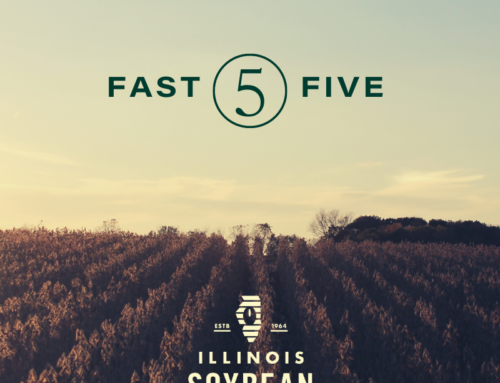Perspective is everything in a world where farmers grow crops in their fields and export them around the world. I gained a new perspective in Market Development’s recent travels to Bogota, Colombia for the 2024 Americas Agricultural Cooperators Conference. Along with three farmer leaders, Betsey Emerick, Brady Holst, and David Niekamp, we saw the impact U.S. soy has on an economy.
While Colombia works to promote domestic production, they simply do not have the capacity to produce the soybeans they demand. This leaves the market open for U.S. exports, which capture over 85 percent market share in soybean meal, is worth $762 million, and is the sixth largest market for all U.S. agricultural products. Over $272 million of pork and pork products and $58 million of poultry products are exported to Colombia each year.

The trip commenced with a tour of a Solla Animal Nutrition facility just outside of Bogota. As one of the nation’s leading feed mills, the company holds a diversified portfolio producing feed for both livestock and pets. The mill imports 90-95 percent of U.S. soybeans. They choose U.S. soy because of its amino acid profile, consistency, and logistical transparency in transport. During our visit, we also witnessed the impact the Soy Excellence Centers (SECs) have made on their employees at various levels. The SECs provide education and training to the future soy industry leaders and, in 2023, delivered 24 courses to nearly 2,800 trainees from over 700 companies and 13 countries. The SECs have plans to expand exponentially in the coming years.
We continued the following days at the U.S. Agricultural Cooperators Conference which brought together 200 stakeholders across each level of the soy value chain: farmers, exporters, buyers, and partners of U.S. soy. The flagship event for the Americas region put a spotlight on its role as the second-largest export destination after Greater China. The region accounts for 23 percent of total U.S. soy exports and set a record for 8.3 million metric tons (MMT) of meal imports, highlighting the robust demand within the poultry and swine sectors. We heard from various members of the U.S. Soybean Exports Council (USSEC) Americas team who work diligently to reinforce U.S. soy’s presence through strategic initiatives and programs that target customers and industry partners. An emphasis was placed on the work done to promote the use of In-Pond Raceway Systems (IPRS) in aquaculture, the nutritional advantages of U.S. soy when compared to soy of other origins, and the importance of the SEC in the future of the industry. Meal exports from the U.S. are projected to grow by over 40 percent in the coming years, so it is vital that these relationships continue to develop as we navigate the constant evolution of policy, logistics, and nutrition.
One main focus of the conference was geared toward education on the differences between U.S. soy and soy from other origins. Both in terms of sustainability and nutrition, soy from the U.S. outpaces its competitors in various categories. Although sustainability can mean something different to every country or region, in measurable metrics, 1,000 metric tons (MT) of U.S. soy is equivalent to just 1 MT of South American beans in CO2 output. Taking on the advantages in essential amino acid profiles and energy content, the U.S. has an advantage in more ways than one.

The conference also facilitated important conversations between stakeholders and farmers to give a direct view into the hands that produce nearly 90 percent of the soy they buy. Two Illinois farmers were highlighted: ASA director Rob Shaffer spoke on a farmer panel sharing insight into his operation, and ISA director Brady Holst gave remarks at dinner.
This learning mission gave us insight into the complexities of the markets that otherwise might not be understood. We were able to get a direct look into the successes and deficiencies in the export of U.S. soybeans and soybean meal, learn about the opportunities in the market, and join in conversations with buyers and end users of our products. Both staff and the Illinois farmers walked away with a new appreciation for this vital destination for soy from Illinois.

